The EVGA GeForce GTX 1070 Ti FTW2 Review: iCX Brings the Lights and Sensors
by Nate Oh on January 31, 2018 9:00 AM EST- Posted in
- GPUs
- EVGA
- GeForce
- NVIDIA
- GTX 1070 Ti
Compute & Synthetics
As always, we will take a look at compute and synthetic benchmarks. Like the gaming benchmarks, this overview is more of a formality as the standardized GTX 1070 Ti reference clocks render the results very similar or within margin of error to those documented in the GTX 1070 Ti Founders Edition review.
Starting us off for our look at compute is Blender, the popular open source 3D modeling and rendering package. To examine Blender performance, we're running BlenchMark, a script and workload set that measures how long it takes to render a scene. BlechMark uses Blender's internal Cycles render engine, which is GPU accelerated on both NVIDIA (CUDA) and AMD (OpenCL) GPUs.
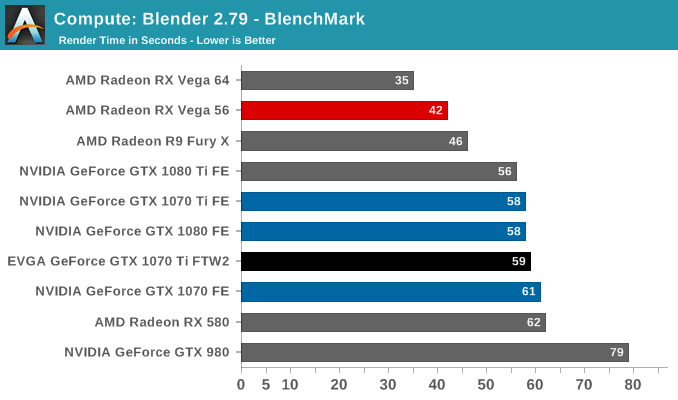
For our second set of compute benchmarks we have CompuBench 2.0, the latest iteration of Kishonti's GPU compute benchmark suite. CompuBench offers a wide array of different practical compute workloads, and we’ve decided to focus on level set segmentation, optical flow modeling, and N-Body physics simulations.
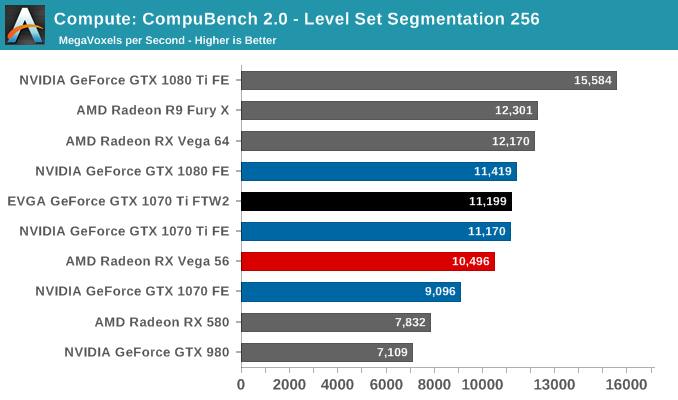

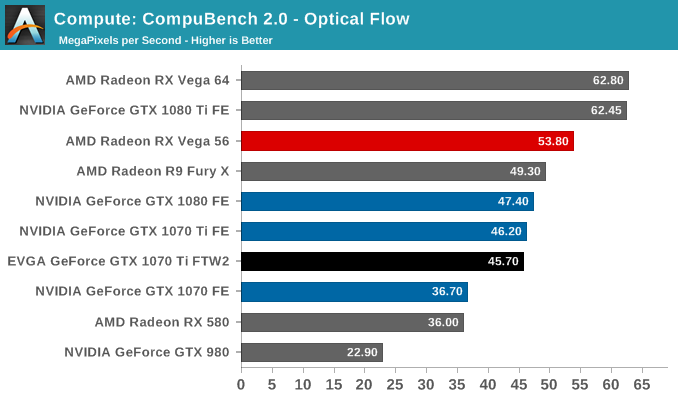
Moving on, our 3rd compute benchmark is the next generation release of FAHBench, the official Folding @ Home benchmark. Folding @ Home is the popular Stanford-backed research and distributed computing initiative that has work distributed to millions of volunteer computers over the internet, each of which is responsible for a tiny slice of a protein folding simulation. FAHBench can test both single precision and double precision floating point performance, with single precision being the most useful metric for most consumer cards due to their low double precision performance.
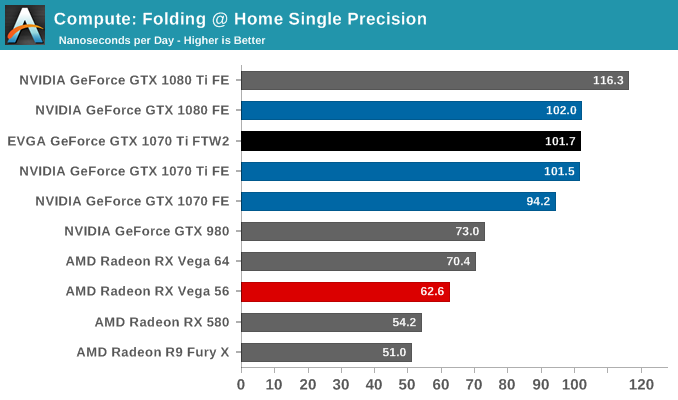
Our final compute benchmark is Geekbench 4's GPU compute suite. A multi-faceted test suite, Geekbench 4 runs seven different GPU sub-tests, ranging from face detection to FFTs, and then averages out their scores via their geometric mean. As a result Geekbench 4 isn't testing any one workload, but rather is an average of many different basic workloads.
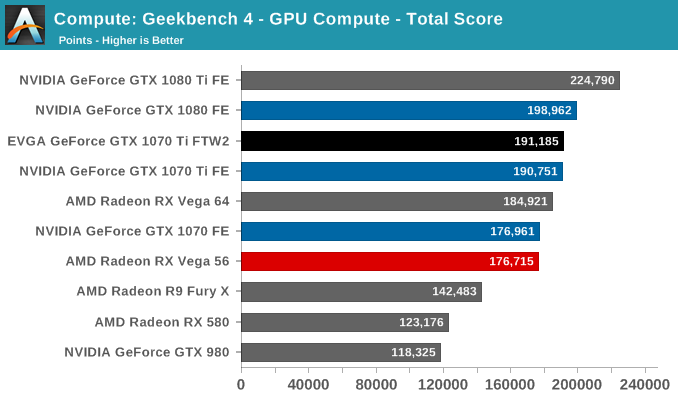
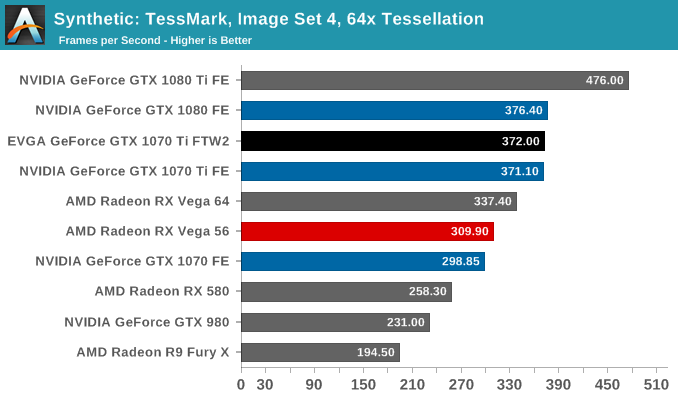
Switching gears, we have Futuremark's VRMark Orange benchmark. Essentially a synthetic gaming-type rendering workload with a focus on VR, this test pushes every part of a video card.

Finally, for looking at texel and pixel fillrate, we have the Beyond3D Test Suite. This test offers a slew of additional tests – many of which use behind the scenes or in our earlier architectural analysis – but for now we’ll stick to simple pixel and texel fillrates.
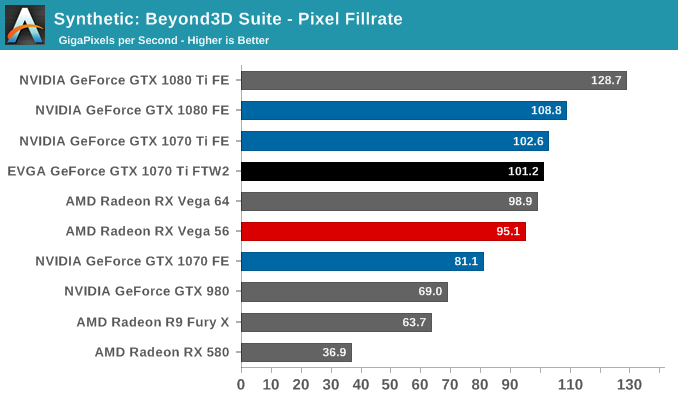

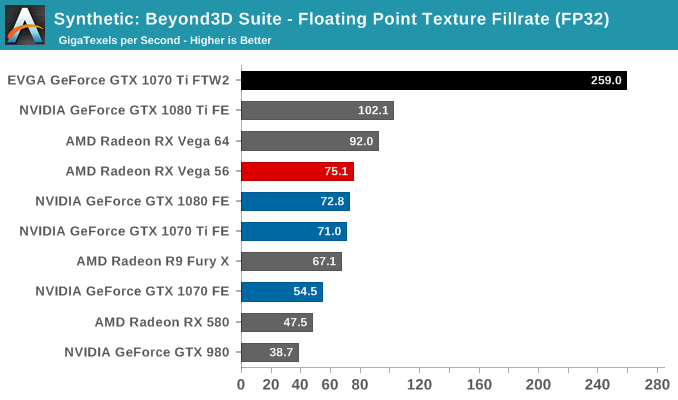










47 Comments
View All Comments
Dr. Swag - Wednesday, January 31, 2018 - link
Oh cool! Anandtech finally reviews some aftermarket gpus!If only we could actually, you know, buy them.
sharath.naik - Wednesday, January 31, 2018 - link
Whats with the gpu prices?!! I had bought 1080 ti for 660$ 8 months back, today its 1400$+, when trying to get a second one.Hereiam2005 - Wednesday, January 31, 2018 - link
I bought mine last week for 750$. Its a shitty 1080ti, the gigabyte gaming oc version, but it is much cheaper than other models.Dr. Swag - Wednesday, January 31, 2018 - link
Miners.JoeyJoJo123 - Wednesday, January 31, 2018 - link
Supply/Demand.People are pointing the finger at miners, but it's more than just an alternative coin mining issue. AIB partners are hesitant to make more cards because the last time GPU mining was big, GPU AIBs mostly sought to meet bigger supply to the bigger demand, only to get burned three-ways.
1) Bitcoin market crashed. This led to GPU demand faltering quickly.
2) They had already made their quarterly order to AMD/nVidia and were stuck with excess GPUs which they couldn't sell due to:
a) Miner card resale market providing cheaper cards to those at lower price brackets.
b) Lack of miner demand which the increased supply was supposed to meet.
c) New GPU architecture releasing the next quarter, while they were still stuck on lots of old GPUs.
3) Excess of warranty claims for excess GPU supply to miners.
AIB partners would be willing to increase their quarterly orders so as to increase GPU supply to meet increased demand (due to miners) if they could _assume_ stability in the demand, which fundamentally means assuming stability in the crypto market, but stability in the crypto market is a complete and utter joke, so they're not willing to increase supply especially if next-gen GPUs might be around the corner if AMD/nVidia have an announcement by next quarter (GTX1100 series, RX600 series, etc.)
JoeyJoJo123 - Wednesday, January 31, 2018 - link
Also, GPU pricing is also being affected by 3rd party sellers wanting to take advantage of the mining demand. 3rd party marketplace sellers on Amazon marketplace, Newegg marketplace, and eBay are also scalping excess GPU stock not to mine, but just to resell to gamers willing to fork over the money, but particularly to miners which can still recoup on the purchase, but will face a longer return on investment.Don't buy from 3rd party marketplace scalpers, they're just as guilty as miners (if not moreso, as they have no intent to even open the GPUs to use them for themselves) for draining supply from 1st party sellers, which prevents folk like you from getting rational prices.
Just wait for next gen cards, maybe. AIBs won't be shy to ramp up production of the newest stuff that miners and gamers will be sure to buy and can guarantee they won't be sitting on outdated stock.
Pinn - Wednesday, January 31, 2018 - link
Nvidia has volta, but AMD has nothing next-gen for awhile.VulkanMan - Wednesday, January 31, 2018 - link
AMD has Navi.CiccioB - Thursday, February 1, 2018 - link
Coming in 2019FreckledTrout - Wednesday, February 7, 2018 - link
AMD have Vega on 7nm coming this year. I wouldn't brush the move to 7nm off either is it should allow the GCN architecture to breath by hitting much higher clocks. Of course the proof is in the pudding but I expect the 7nm shrink to be a decent performance bump.